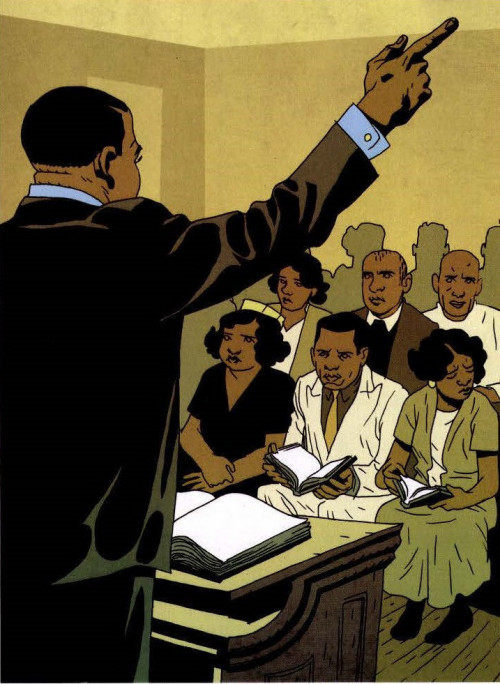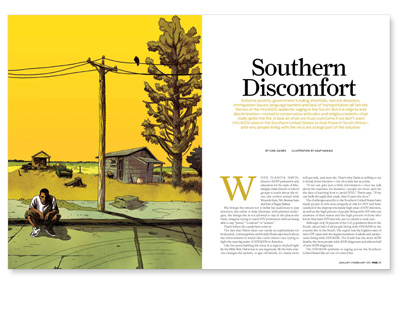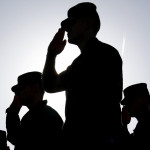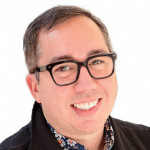When Juanita Davis, director of HIV prevention and education for the state of Mississippi, visits church or school groups to teach about the virus, she arrives armed with Mounds bars, 5th Avenue bars and lots of Sugar Babies.
She brings the sweets not to bribe her audiences to pay attention, but rather to help illustrate, with physical analogies, the things she is not allowed to say in the places she visits. Imagine trying to teach HIV prevention without being able to say “penis,” “condom” or “semen.”
That’s where the candy bars come in.
The fact that Davis must use candy as euphemisms for body parts, contraceptives and bodily fluids says much about the environment in which she—and others—are trying to fight the next big wave of HIV/AIDS in America.
Like her peers battling the virus in a region cinched tight by the Bible Belt, Davis has to use ingenuity. By the time anyone changes the system, or age-old beliefs, too many more will get sick, and even die. That’s why Davis is willing to try to break down barriers—one chocolate bar at a time.
“If we can give just a little information—once we talk about the statistics, for instance—people are more open [to the idea of learning how to avoid HIV],” Davis says. “If we can [talk through] that crack, they’ll open the door.”
The challenges specific to the Southern United States have made people in this area uniquely at risk for HIV and have resulted in the disproportionately high rates of HIV infection, as well as the high percent of people living with HIV who are unaware of their status and the high percent of those who know they have HIV but who are too afraid to seek care.
Although only 36 percent of the U.S. population lives in the South, about half of all people living with HIV/AIDS in the country live in the South. The region has the highest rates of new HIV cases and the largest numbers of adults and adolescents living with HIV/AIDS. The South has the most AIDS deaths, the most people with AIDS diagnoses and almost half of new AIDS diagnoses.
The HIV/AIDS epidemic is raging across the Southern United States like an out-of-control fire.
Conservative attitudes about sex and sexuality are just one hurdle HIV fighters face in the South. Extreme poverty is another. Kathie Hiers, chief executive officer of AIDS Alabama, says, “[The South has] the most people living with HIV/AIDS, the most rural areas, the most people without health insurance and the highest [overall] death rate.”
She cites poverty as a key element in the spread of HIV across the South, pointing out that as the economy tanked across the country, people in the South had less distance to fall before hitting rock bottom.
Of the 17 states considered “Southern” by the U.S. Census Bureau, 13 of them have poverty rates of 16 percent or more. In Mississippi, the poorest of the poor states, the poverty rate rises to 21 percent.
To witness what that life below the poverty line looks like, you only need to travel a short distance out of Jackson, the state capital.
Two hours northwest of Jackson you hit Greenville. As you drive to Greenville, the terrain dips down and flattens out into a seemingly endless sea of cotton fields that flow down to the Mississippi delta. Located smack inside the delta, Greenville is one of the poorest cities in the state.
Greenville, in Washington County, has a population of 54,616 and is famous for its cotton and catfish. But many people have left the area in recent years. There is a sense of real isolation in this rural county. Many people don’t have cars or access to the Internet.
For people diagnosed with HIV in Greenville, poverty not only keeps expensive medications out of their reach, it even keeps people from getting to a doctor in the first place.
“I was diagnosed in 1990 when the health department told me I had contracted HIV,” says Dorothy Davis, a longtime Greenville resident. After informing Davis of her status, the health department sent her home. “I walked home from the health department not knowing how I got there—I was in a daze.” Due to her low income and lack of transportation, she had trouble accessing care and treatment.
Over the years, Davis has tried to organize support groups for other people in the area who are HIV positive. But even though there has been interest, it has been too hard to get people together.
Another woman living with HIV in Cleveland, Mississippi—about an hour’s drive from Greenville—wanted to attend Davis’s support group, but she didn’t have access to a car and she couldn’t get there via public transportation. As far as Davis knows, the woman still hasn’t been linked to any support network.
Robin T. Webb, executive director of A Brave New Day, a Jackson–based HIV/AIDS advocacy group, says lack of transportation for some in the South is a major issue when it comes to fighting and living with the disease. “Peer networking is not valued [in Mississippi],” Webb says. “If it were valued, there would be transportation.”
Webb also points out another critical barrier: lack of understanding about available support programs designed to help low-income people access care and treatment. This is true, he says, of both people living with HIV and the medical providers who treat them.
“People don’t know what HOPWA and ADAP are,” he says, referring to the Housing Opportunities for Persons with AIDS and the AIDS Drug Assistance Program. Our country, he continues, has a habit of delivering services but not educating people that they are available.
Davis is a case in point. When asked, she didn’t know who paid for her HIV medications. She suspected that their cost was covered by her Social Security Disability Insurance. All she knew for sure is that when she went to the pharmacy, her prescriptions were there. She had never heard of ADAP.
But even if Dorothy Davis knew about ADAP, she might not be able to receive benefits from the program.
Yet another complicating factor when it comes to fighting HIV in the South is that even federal funds specifically allocated to help people with HIV may not be reaching those most in need. The distribution of special funds was set up when the epidemic was concentrated on the coasts and in the north. The disease has moved faster than the systems set up to tackle it have evolved.

Illustration by Asaf Hanuka
For example, in 2008, Part A of the Ryan White HIV/AIDS Treatment Modernization Act provided $627 million nationwide for emergency assistance for people living with HIV. The bulk of this federal funding was directed to EMAs, or “eligible metropolitan areas.”
To qualify, according to the Department of Health and Human Services, an area must have reported more than 2,000 AIDS cases in the most recent five years and have a population of at least 50,000. Under these constricts, many of the South’s rural areas cannot secure funding.
If one were to try to understand the HIV hot spots in America based on Ryan White appropriations, one would think HIV/AIDS was primarily an urban disease. But the truth is drastically different. And until funding gets shifted to areas hardest hit by HIV, we will continue to see an imbalance between need and resources.
Another critical component to the health care needs of low-income HIV-positive people is Medicaid.
As a result of the structure for distributing Ryan White funding, the bulk of money for HIV/AIDS care in the South comes from Medicaid, the U.S. government’s health care program for low-income Americans (This is true in many other parts of the country, including those also covered by Ryan White funding). To date, four in 10 Americans with HIV have their health care covered by Medicaid.
However, Southern states in particular, in efforts to bring down costs and shorten budget deficits, are limiting their Medicaid contributions and the services that Medicaid covers. For example, the expenditure of $127 million from Congress in supplemental Medicaid dollars is being postponed by Mississippi Governor Haley Barbour until fiscal year 2012.
“I appreciate the leadership of both houses for agreeing that these additional funds should be saved and spent in fiscal year 2012 when we face a budget shortfall of more than $600 million,” says Barbour in an August 2010 statement.
Meanwhile, in December 2010, there were 828 people on AIDS Drug Assistance Program wait lists in Georgia and 477 people waiting in Louisiana. There were no wait lists in Mississippi.
Southern states already have relatively low Medicaid expenditures given their population sizes. In 2008, Alabama, with a population of 4.7 million people, paid $4.1 billion for the program, and Mississippi, with a population of 2.9 million, paid $3.8 billion. By comparison, New York, with a population of 19.2 million, paid the most of all states—$47.6 billion.
Many see the Patient Protection and Affordable Care Act, a.k.a. the nation’s new health reform bill, as a bright spot, widening the net of HIV-positive people eligible for services.
“I think that health care reform is going to help a lot,” Hiers says. “When health care reform kicks in, we figure that about 80 percent of HIV-positive people [in the South] are going to get Medicaid.”
Personal poverty, tight-fisted and impoverished state governments and conservative attitudes toward sex have created a perfect storm of inadequate HIV care for many Southerners, but Mother Nature herself has also played a big role. Hurricanes Katrina and Rita slammed into Louisiana and Mississippi in 2005, and the storms’ aftermaths continue to undermine both prevention and treatment efforts.
The storms destroyed infrastructure, much of which has still yet to be rebuilt, and this continues to make getting around difficult. Many people who were dislocated from their homes are still not settled into new ones. Medical records for countless people were washed away.
Adding insult to injury, the BP oil spill in 2010 further wrecked the Gulf Coast economy, making addressing the needs of those in the area even more challenging.
Sergio Farfan, cochair of the Louisiana Latino Health Coalition for HIV/AIDS Awareness, who lives in Baton Rouge, was one of the first to return to New Orleans, post Katrina, in an effort to rescue medical records. As the chaos surrounding the hurricane subsided, he says, Latinos streamed in to help clean up the devastation.
According to a 2006 study by Tulane University in New Orleans and the University of California at Berkeley, almost half of all reconstruction workers who came to New Orleans post Katrina were Latino—and a quarter of them were undocumented. “The health needs for the Latino community, [including people with HIV], increased tremendously [after the hurricane],” Farfan says. The Mexican Consulate in New Orleans closed in 2002, but it reopened post-Katrina to deal with the increased need.
Farfan says that it can be particularly hard to reach the Latino population due to stigma surrounding HIV—and that language barriers create more problems.
One of the main challenges with trying to do HIV/AIDS prevention and outreach work among Latinos in the South has been the lack of services in Spanish, Farfan says. And not everybody is coming from the same country, so there are small cultural differences that are important to acknowledge.
He also cites current immigration laws, which cause undocumented people to hide and which make them ineligible for free services from the state, as major challenges to effectively combating HIV among Latinos in the South.
But for all these factors—poverty, lack of funds and services, squeamishness about sex, language and immigration barriers, walls of water and oil washing over parts of the region—without a doubt, the largest obstacles in the South to fighting HIV/AIDS remain stigma and discrimination. Advocates acknowledge that the factors are far from unique to the South, but they run deep in the region—and religion further entrenches them in the culture.
Hiers of AIDS Alabama tells the story of a board president at an AIDS service organization she ran in Mobile years ago. When he found out he was HIV positive, this man would drive several hours to Birmingham for medical care in order to avoid being seen in his neighborhood seeking treatment. His care lapsed, and he died.
“The stigma is still bad,” Hiers says. “The good news is that the death rate is going down, though we’re still lagging behind the Northeast.”
“There is religiously driven stigma,” says Webb of A Brave New Day. “[As a result,] across the board people aren’t getting tested [for HIV].” They’re also not getting educated about the virus. Webb says churches are eager to do HIV/AIDS outreach in Africa, but they are unwilling to broach the topic at home.
The lack of participation by many religious groups, especially black churches, in the fight against AIDS is a source of frustration for Ruby Gray, a social worker for the past two years with GA Carmichael Family Health Center in Canton, Mississippi, who has worked in HIV prevention services for more than 20 years.
Despite the fact that through 2008, 70 percent of the AIDS diagnoses in Mississippi occurred in the black community, Gray says black churches often don’t want to even acknowledge the HIV/AIDS epidemic in the South. “It’s like everyone’s turning their heads and it’s not happening—but it is happening.”

Illustration by Asaf Hanuka
She says much of the unwillingness on the part of black churches to get involved in HIV/AIDS education, prevention and treatment is based on the connection between the disease—and people’s sexual orientation. “The [stigma] is tied to the idea of MSMs,” says Gray, referring to men who have sex with men.
In the United States, HIV is too connected to gay people, sex workers and drug users, Webb says. It’s easier for people in the South to think about helping heterosexual people in Africa with the disease.
Gray spent five years trying to convince her church pastor to incorporate some mention of HIV into his sermons and to have someone come in to speak. He finally said yes and she says since then she hasn’t had any further problems getting HIV/AIDS messaging and materials into her church.
Davis in Greenville also knows how difficult it can be to get black churches to talk about HIV/AIDS. She does peer-to-peer outreach, speaking at churches and schools about HIV when they’ll let her in the door, which isn’t often.
“Churches don’t want to participate,” she says. Davis recalls once being invited by a congregant to speak at a nondenominational church in the area, only to show up and have the pastor, who had approved the presentation, tell her there wasn’t time in the service for her talk.
Her beliefs about homosexuality and her feelings about how she became HIV positive show that, like many women in similar situations, Davis herself isn’t free from either stigma or discrimination.
Davis believes being gay is a choice—and she says she contracted HIV from a boyfriend who, unknown to her, also had sex with men.
“If a person wants to be gay, then be gay,” she says. “You get caught up in it, and it’s a hard habit to break—like cigarettes or drug addiction.” To underscore her point, Davis recounts the years she has spent, to no avail, trying to quit her own smoking habit.
She says of herself and other women who became HIV positive the way she did, “We didn’t have a choice, because we didn’t know.” She has made it her mission to change that for other Southern women—and men. Though her views on MSM are controversial (and may harm many MSM), the fact is she’s trying, in her own way, to move beyond issues of sexual orientation to help save lives—it’s a step more should take.
By doing so, she is a role model who shows that we don’t have to support or agree with people (whether on sexual orientation, HIV and immigration status or religious and political beliefs) to fight for their right to stay healthy. Even if that means we have to talk about sex and sexual orientation. In schools. In churches. At home.
Hiers agrees and suggests much of the solution to this nasty matrix of hard-to-overcome barriers rests on the shoulders of people living with HIV/AIDS who themselves demand heightened awareness, better education and improved access to care and services—despite stigma and discrimination.
Indeed, Hiers, Farfan and the two Davises are exemplary models of the kind of positive change that can happen, even in the most challenging of environments, when people with HIV and their advocates take matters into their own hands. Even if they have to use a candy bar every now and then to sugarcoat the bittersweet truth.








8 Comments
8 Comments